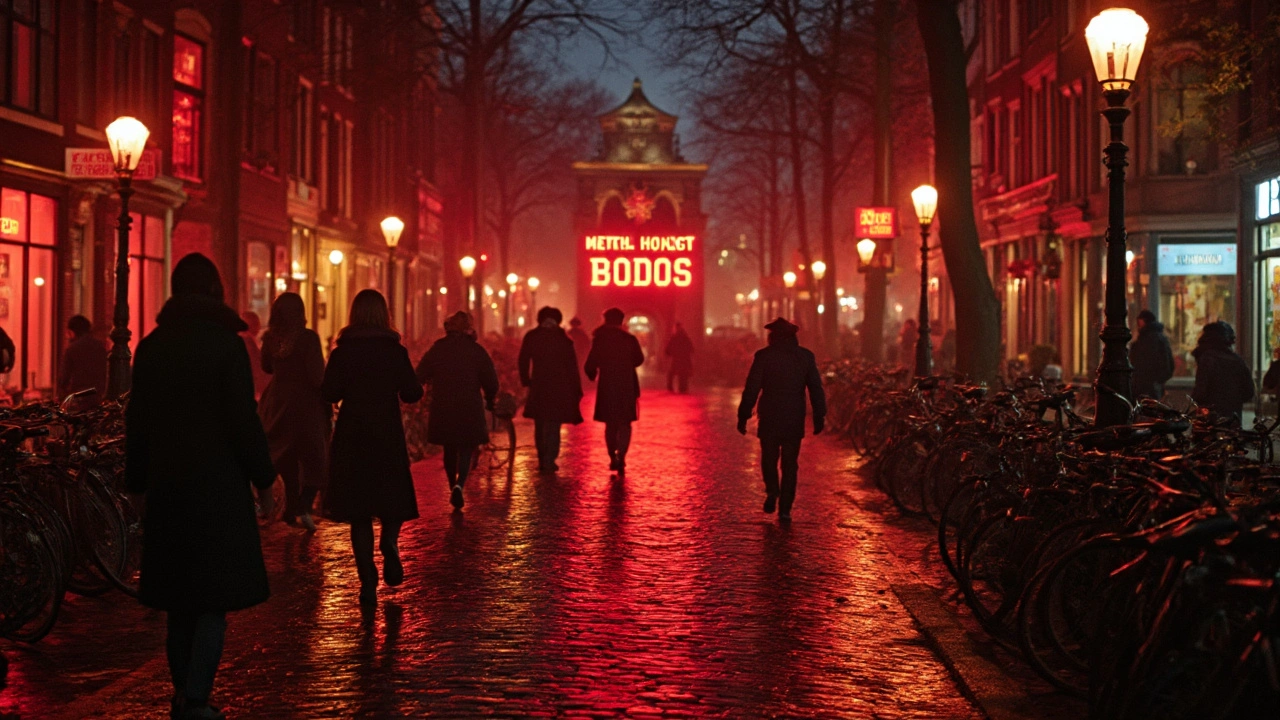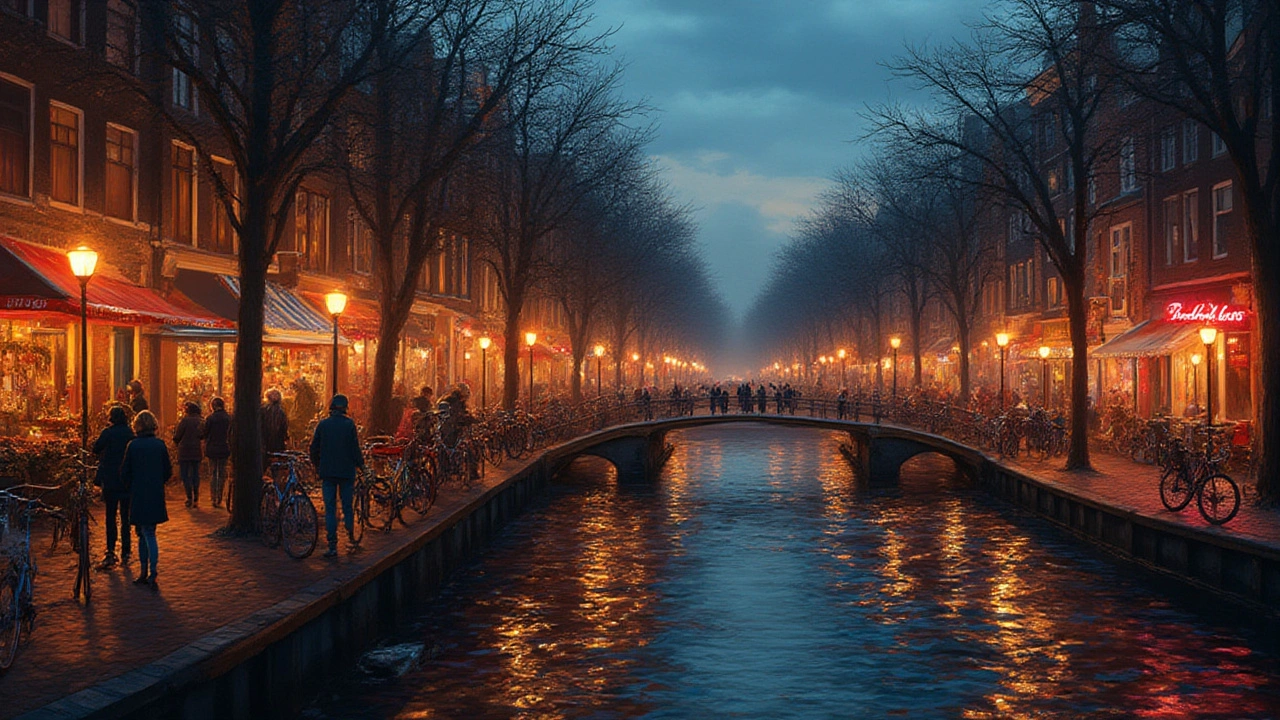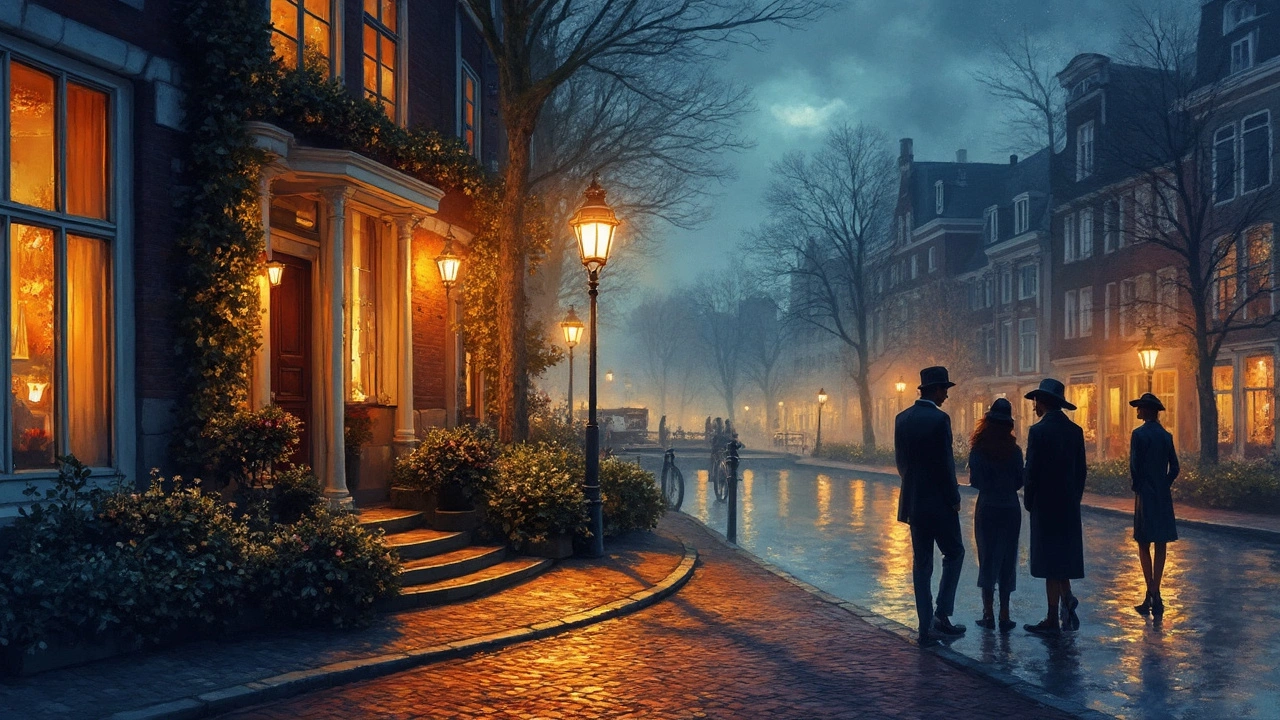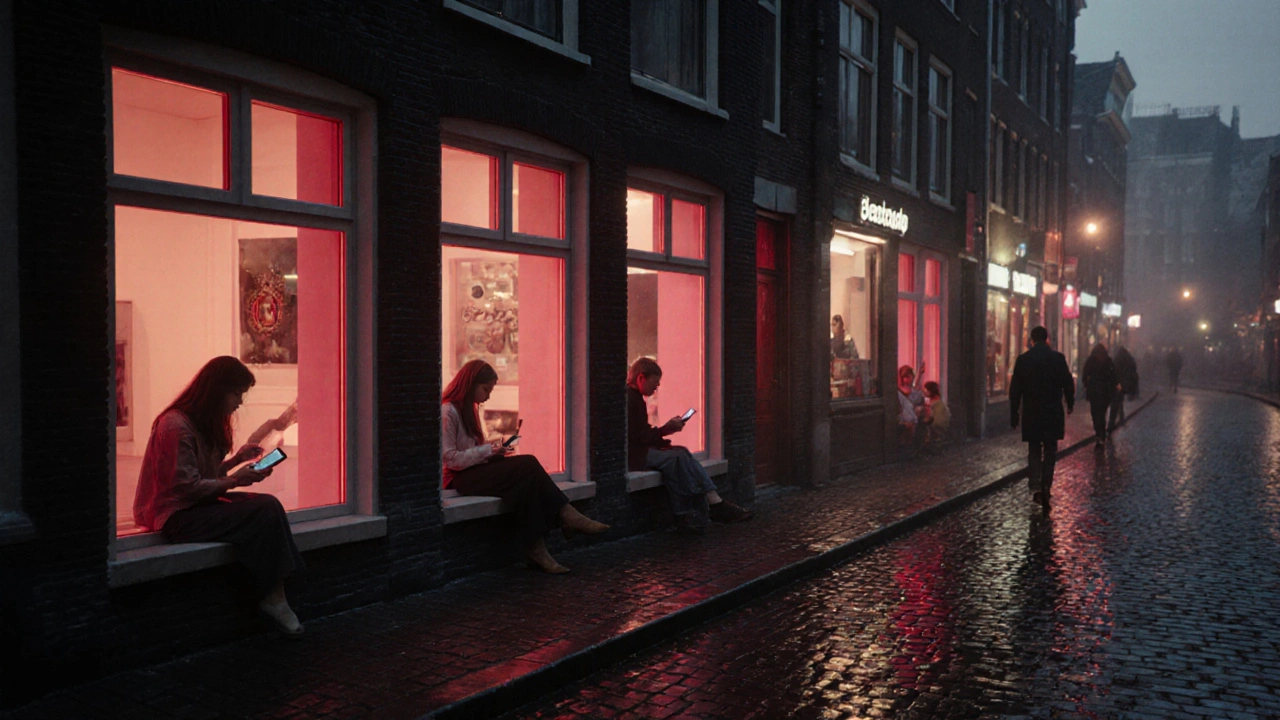
Amsterdam’s nightlife isn’t just about canals, coffee shops, and jazz bars. For decades, the presence of sex workers - often called "call girls" - has been woven into the city’s after-dark rhythm. But calling them "call girls" oversimplifies a complex, regulated, and deeply human part of the city’s economy and culture. These women aren’t just background noise in the Red Light District. They’re workers, entrepreneurs, and sometimes survivors, operating in a system that tries to balance freedom, safety, and stigma.
What You Actually See in the Red Light District
Walk into De Wallen after midnight, and you’ll see windows lit by soft pink or red bulbs. Behind each pane, a person - mostly women, but also men and transgender individuals - sits quietly, sometimes reading, sometimes scrolling on a phone. This isn’t a carnival. It’s a workplace. Many of these workers are independent contractors. They pay rent to the building owner, cover their own taxes, and set their own hours. Some have been doing this for 15 years. Others are students paying for tuition. A few are refugees who found work here because it was one of the few jobs that didn’t require fluency in Dutch.Contrary to what movies show, most don’t approach strangers on the street. They wait. Clients book appointments through websites, phone calls, or in-person visits to agency offices. The women behind the windows often screen clients before letting them in. They know the risks. They’ve seen what happens when rules are ignored.
How It’s Legal - And Why It Matters
The Netherlands decriminalized sex work in 2000. That didn’t mean it became free-for-all. It meant it became regulated. Sex workers must register with the city, pay taxes, and follow health and safety standards. They’re entitled to labor rights - including the right to refuse a client, take breaks, and report abuse without fear of deportation.This system isn’t perfect. Some workers still get exploited by unlicensed operators. Some landlords raise rents so high that workers can’t make ends meet. But compared to places where sex work is illegal, Amsterdam’s model reduces violence and disease. A 2023 study by the Amsterdam Public Health Service found that 92% of registered sex workers in the city had access to free STI testing, and 78% said they felt safer working under the current rules than they did five years ago.
The Real Nightlife Connection
Amsterdam’s nightlife doesn’t revolve around sex work - but it doesn’t ignore it either. Bars near the Red Light District, like Café de Ceuvel or De Pijp’s De Bakkerswinkel, often see patrons who’ve just finished a visit. Tourists come to see the windows, take photos, then head to a pub to talk about it. Locals know better. They don’t gawk. They nod. They know the woman behind window #12 is the same person who volunteers at the local women’s shelter on Sundays.Some sex workers even run side businesses. One woman I know runs a small Etsy shop selling handmade candles. Another teaches yoga classes in the evenings. A third started a podcast about financial independence for women in informal work. Their lives aren’t defined by the windows they work behind. But those windows? They’re part of the city’s identity.
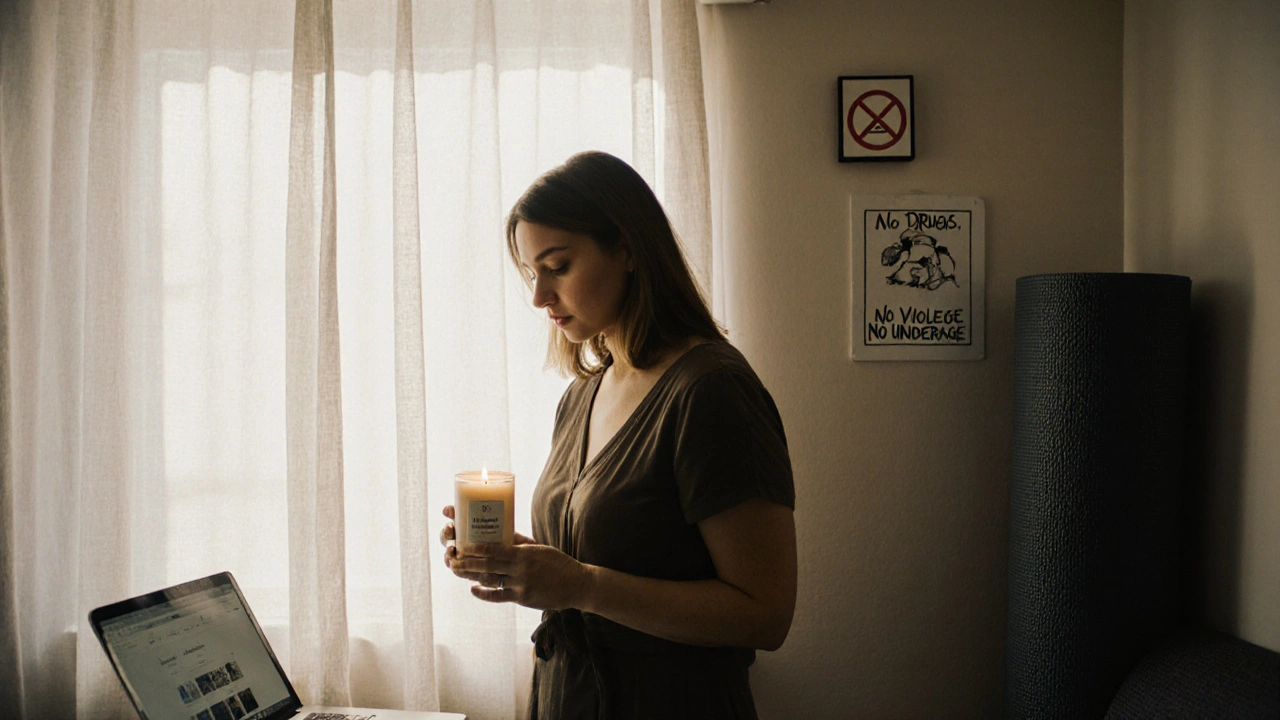
Why "Call Girl" Is the Wrong Word
The term "call girl" sounds glamorous. It suggests luxury, discretion, high-end service. In reality, most workers in Amsterdam’s Red Light District aren’t charging €500 an hour. The average rate for a 30-minute session is €50-€80. Many work 6-8 hours a night, six nights a week. That’s not a lifestyle. That’s a job.And it’s not just women. Male and trans sex workers exist too, but they’re rarely called "call girls." The term carries gendered, romanticized assumptions that don’t match reality. The better term? Sex worker. It’s neutral. It’s accurate. It respects the person behind the work.
What Tourists Get Wrong
Most visitors come with expectations shaped by porn, old guidebooks, or sensational headlines. They think the Red Light District is a playground. It’s not. It’s a neighborhood. People live here. Kids go to school down the street. There’s a pharmacy, a post office, a bakery that opens at 6 a.m.When tourists take photos of workers without permission, or shout "Hey baby!" from the sidewalk, they’re not being playful. They’re violating boundaries. Workers have reported being spit on, shoved, or followed home. The city has responded with signs: "No Photos. No Harassment." Police patrols increased in 2024 after a spike in complaints.
If you’re curious, visit during daylight. Look at the windows. Read the small signs: "No Drugs. No Violence. No Underage." Some workers even leave handwritten notes: "Thank you for being respectful." That’s the real story.

What’s Changing - And Why
The city has been slowly shrinking the Red Light District. In 2021, 120 windows operated in De Wallen. Today, there are fewer than 80. Why? Rising rents. Pressure from residents. A push to turn the area into a cultural district - museums, theaters, boutique hotels.Some workers have moved to the outskirts. Others switched to online platforms. More are working through agencies that book appointments in private apartments. This shift isn’t about shutting down sex work. It’s about moving it out of the tourist spotlight. The goal? To give workers more privacy, safety, and control.
But here’s the catch: the people who benefit most from this change aren’t tourists. They’re the workers themselves. One woman told me, "I used to get 20 people a night. Now I get five. But I get to choose who they are. I get to sleep at night. That’s worth more than money."
How to Respect the Work - And the Workers
If you’re visiting Amsterdam and want to understand this part of the city, here’s how to do it right:- Don’t take photos. Ever.
- Don’t yell, whistle, or make comments.
- If you’re interested in services, go through a licensed agency - never approach someone on the street.
- Tip if you’re satisfied. It’s not required, but it’s appreciated.
- Don’t treat it like a theme park. It’s someone’s job.
And if you’re writing about it? Use accurate language. Call them sex workers. Mention their rights. Highlight their resilience. Don’t romanticize. Don’t demonize. Just tell the truth.
It’s Not About Sex. It’s About Survival.
Amsterdam’s sex workers aren’t the heart of its nightlife. But they’re part of its soul. They’re people who’ve chosen this work - sometimes out of desperation, sometimes out of empowerment - and they’ve carved out dignity in a world that often refuses to see them as human.The city’s laws may protect them. But real safety comes from how we treat them. Not as objects. Not as spectacle. But as neighbors. As coworkers. As individuals with names, stories, and boundaries.
Next time you’re in Amsterdam, walk through De Wallen quietly. Look at the windows. See the people. And remember: this isn’t a show. It’s life.
Are call girls legal in Amsterdam?
Yes, sex work is legal in Amsterdam, but only if it’s consensual, voluntary, and regulated. Workers must be over 18, register with the city, pay taxes, and follow health guidelines. Brothels are legal, but pimping, trafficking, and forced labor are serious crimes with heavy penalties.
Can tourists hire call girls in Amsterdam?
Yes, but only through licensed channels. Approaching workers in the Red Light District windows is discouraged and often illegal. Most workers now use online platforms or agencies to screen clients. Always book in advance. Never pay on the street. And never assume consent - it must be clear, verbal, and ongoing.
Why are there fewer windows in the Red Light District now?
The city has been reducing the number of windows since 2018 to combat tourism overcrowding, improve safety for residents, and shift the area toward cultural use. Rising rents and stricter zoning laws have also pushed many workers out. Today, most sex work happens in private apartments or through online booking - which gives workers more control and privacy.
Do sex workers in Amsterdam get benefits?
Registered sex workers are entitled to the same labor rights as other independent contractors. They can access free STI testing, counseling, and legal aid through city-funded programs. Many join unions like the Dutch Sex Workers’ Union (VWS) for support with taxes, contracts, and safety training. They pay taxes like any other business owner.
Is it safe to visit the Red Light District at night?
Yes, if you behave respectfully. The area is well-lit, patrolled by police, and monitored by cameras. But it’s not a tourist attraction - it’s a neighborhood. Avoid taking photos, shouting, or lingering too long. Don’t enter private buildings without an appointment. Most violence happens when people ignore basic rules of decency.

